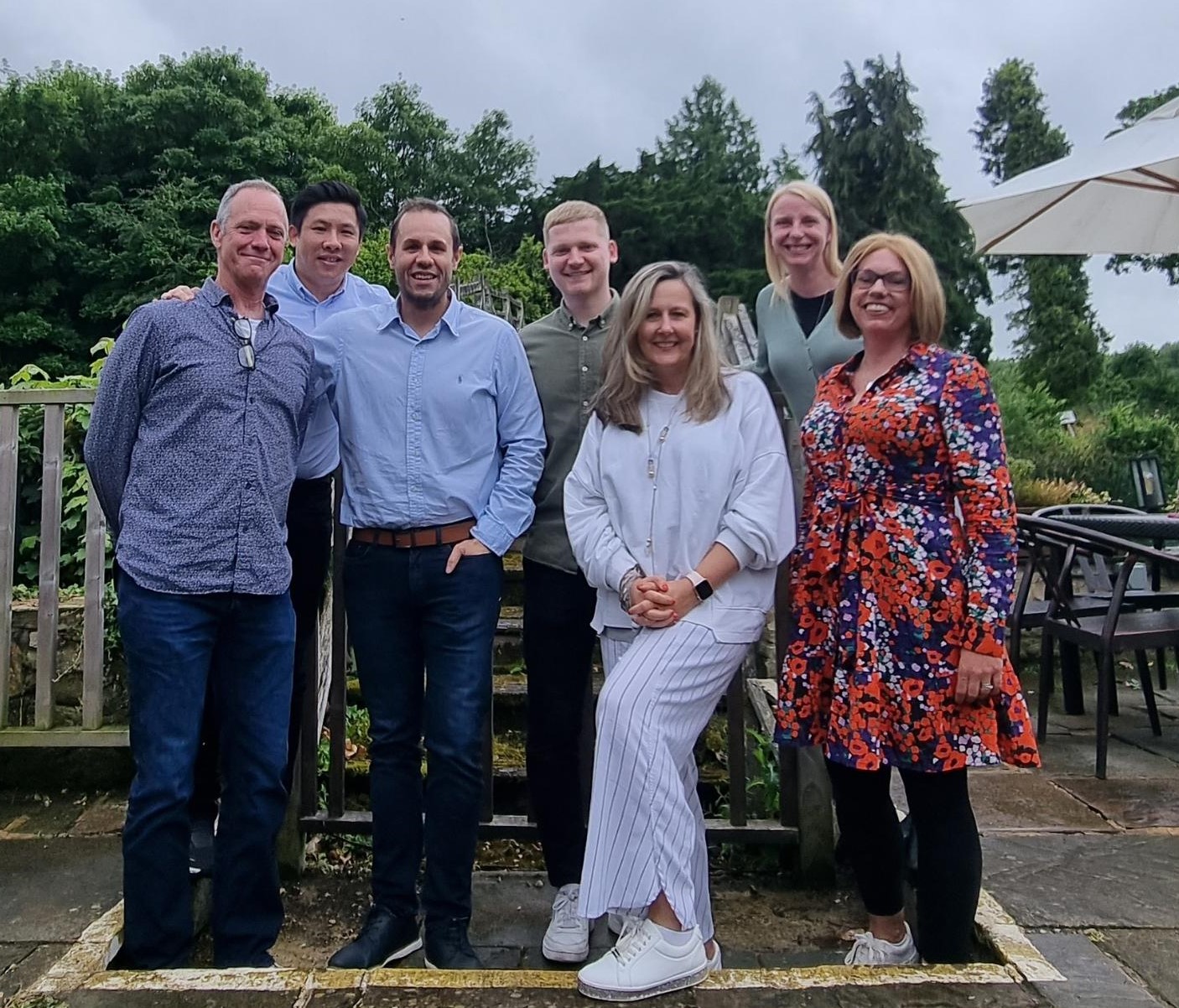The leadership crisis: why it matters now
The ability to identify leadership potential is a key differentiator for organisations aiming to thrive in a dynamic and competitive landscape. However, research shows a widening gap between organisational needs and the calibre of leaders. While many organisations excel at identifying high performers, fewer are adept at recognising those who possess the attributes required to succeed in leadership roles. By understanding what makes a great leader and implementing structured processes, organisations can create a robust leadership pipeline.
The latest DDI Global Leadership Forecast from 2023 highlights a troubling reality: only 40% of leaders rate their company’s calibre of leadership as high. This marks a significant drop from prior years (17% decrease in two years), exacerbated by growing workplace challenges such as hybrid working, rapid digital transformation, and economic uncertainty. We then see that only 12% of companies have confidence in their leadership bench strength, so there is a real shortage of leaders to fulfil critical roles. Following the pandemic the great resignation decimated talent pools and it appears many companies have struggled to rebuild their bench. However, this is also a longer-term trend – there has been a steady decline (33%) in this confidence since 2011.
The research also reveals that organisations with stronger leadership pipelines are more adaptable to change, better at engaging employees, and more likely to outperform their competitors. Without proactive identification and development, organisations risk being unprepared to meet future challenges. Yet, identifying leadership potential remains a challenge for many organisations.
The leadership potential dilemma
It is important to understand what we mean by leadership potential. One of the most common pitfalls in identifying leadership potential is relying too heavily on past performance or technical expertise. While these qualities are important, they don’t necessarily translate into the ability to lead, inspire, and navigate the complexities of a leadership role. Drawing on the frameworks of Silzer and Church (2010) and Dries and Pepermans (2012), leadership potential can be assessed across four key dimensions:
Cognitive abilities
Effective leaders have strong problem-solving skills, intellectual curiosity, and the ability to think strategically. They thrive on complexity and demonstrate the ability to see the big picture while attending to critical details.
Learning agility
Learning agility is a hallmark of high-potential talent. High-potential individuals are adaptable, open to feedback, and eager to learn from diverse experiences. This allows them to thrive in unpredictable environments. Leaders with learning agility can pivot quickly in response to changing circumstances.
Drive and motivation
Leadership potential often correlates with a strong sense of ambition and perseverance. Individuals with high drive are results-oriented and demonstrate a commitment to achieving goals. They are intrinsically motivated to take on challenges and consistently aim for excellence.
Emergent leadership qualities
This includes the ability to inspire others, take initiative, and build collaborative relationships. Emergent leaders demonstrate self-confidence without arrogance and possess strong interpersonal skills.
Practical strategies for identifying leadership potential
To effectively identify leadership potential, organisations must implement systematic approaches. Below are actionable tips drawn from research and best practices:
Establish your leadership potential framework
Establish a clear and consistent definition of leadership potential that is relevant to your context. Alternatively use validated models like the one outlined by Silzer and Church, which emphasise behavioural, cognitive, and motivational dimensions. Using an existing and proven framework for assessing leadership potential and capability will enable you to benchmark your participants against other leaders.
Tip: collaborate with HR and senior leaders to align the framework with your organisation’s strategic goals and leadership needs.
Use a multi-method approach to assessment
No single method can fully capture leadership potential. Use a combination of tools, such as personality assessments, cognitive ability tests, and structured interviews. As noted in DDI’s research, organisations that use a mix of assessment methods are more effective at identifying high-potential talent.
Tip: incorporate a range of tools and techniques that have proven credibility and efficacy to identify leadership potential.
Identify high performers with learning agility
As highlighted by Dries and Pepermans, learning agility is a critical predictor of future success. Look for employees who are adaptable, seek feedback, the ability to handle unfamiliar challenges and focus on continuous improvement.
Tip: use tools like self-assessments or 360-degree feedback to measure adaptability and openness to feedback. Incorporate learning agility into performance evaluations by asking questions like, “How quickly does this individual adapt to new challenges?” and “Do they actively seek growth opportunities?”
Test potential through stretch assignments
Provide employees with opportunities to take on new responsibilities, lead cross-functional projects, or work in high-pressure environments. Stretch assignments reveal key leadership traits such as resilience, problem-solving, and the ability to influence others.
Tip: assign projects that require cross-department collaboration or involve ambiguous challenges to assess how individuals manage complexity.
Encourage multi-rater feedback
Effective leadership often manifests in behaviours noticed by colleagues, supervisors, and subordinates. Gather feedback from multiple perspectives to avoid bias and ensure a well-rounded evaluation of an individual’s leadership qualities.
Tip: use 360-degree feedback surveys to collect recent and well-rounded perspectives on collaboration, communication, and influence.
Spot early signs of leadership interest
Emergent leadership qualities often appear before formal leadership roles. Potential leaders often signal their interest in leadership roles by volunteering for challenges, mentoring others, and seek to influence without authority. Look for individuals who naturally seek to make a broader impact.
Tip: observe team dynamics during meetings or collaborative projects to identify those who instinctively lead or inspire others. Pay attention to employees who consistently go beyond their job description and take initiative without being asked.
Integrate development with identification
Identifying potential is only the first step; development is equally important. Once potential leaders are identified, provide tailored training, mentoring, and coaching to help them build the skills needed for future roles. According to Silzer and Church, effective organisations integrate development plans into leadership pipelines.
Tip: ensure high-potential employees have development plans that prioritise development where it will have the greatest impact. Create rotational programs that expose high-potential employees to diverse functions, giving them the breadth of experience needed for senior leadership.
Diversity and inclusion in leadership potential
One of the most critical shifts in leadership assessment is recognising and mitigating bias. Traditional methods often favour individuals who fit existing stereotypes of leadership (e.g., extroversion, assertiveness). This narrow focus excludes diverse talent and perpetuates cloning.
Tip: evaluate potential through diverse lenses and ensure equitable access to leadership development opportunities. For example, assess how introverted leaders excel in fostering deep team relationships or how cultural perspectives shape innovation.
Revisit assessments regularly
Leadership potential is not static. It can evolve – or diminish – based on opportunities, experiences, and personal growth. Recent research views potential as a dynamic trait rather than a fixed characteristic. Allan Church’s work highlights how potential can be nurtured over time through developmental experiences, feedback, and coaching. This perspective aligns with Carol Dweck’s growth mindset theory, which suggests that abilities can be developed with effort and the right support. Instead of labelling individuals as “high-potential” or not, create developmental pathways that allow employees to demonstrate and expand their capabilities.
Tip: organisations should also adopt a growth-oriented approach to leadership potential. Schedule annual or biannual talent reviews to assess progress and make necessary adjustments to development plans.
Building a sustainable leadership pipeline
Organisations that succeed in identifying leadership potential position themselves to thrive in a competitive and uncertain future. As noted by DDI, the gap in leadership quality underscores the urgency of proactive talent identification. By combining structured frameworks, robust assessment methods, and a commitment to ongoing development, organisations can cultivate a new generation of leaders equipped to tackle tomorrow’s challenges.
As the Global Leadership Forecast reminds us, the time to act is now. With the right tools and strategies, your organisation can secure the leadership talent it needs to drive long-term success.
References
Silzer and Church (2010), Identifying and assessing high-potential talent: Current organizational practices. In R. Silzer & B. E. Dowell (Eds.), Strategy-driven talent management: A leadership imperative (pp. 213–280). San Francisco, CA: Jossey-Bass
Dries, N & Peperman, R (2012) How to identify leadership potential, Human Resource Management.





















